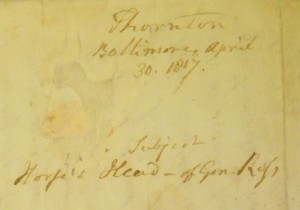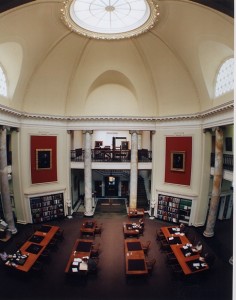In 1952 the renowned chef Julia Child joined a book project to bring French cuisine into North American homes. As many movie-goers now know, she spent the next nine years working on the “dog-eared, note-filled, butter-and-food-stained manuscript” (My Life in France, 207) that would become the seminal Mastering the Art of French Cooking.
The wearisome demands of researching and testing grew out of a resolve to translate one culture’s food to another successfully. Child remembered “wailing” to her co-author Simone Beck, “Why did we ever decide to do this anyway?” when she realized her “beloved crème fraîche” was unavailable in most American grocery stores (207).
What Child understood, and applied in her books, is that any recipe of value in a kitchen needs to center around available products.
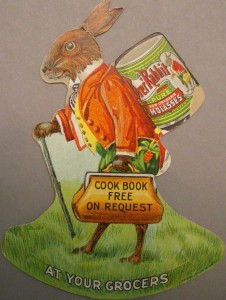
A cookbook comprised of exotic ingredients only found halfway across the globe must be relegated to travel literature or wishful thinking.
By their nature, household cookbooks are created to be relevant, to rely on a common language, and to fit within their audience’s ways of life. Historian Susan Strasser cautions though that they “tell us neither more nor less about reality than…the latest edition of the Joy of Cooking” (Never Done, xv). If we accept, though, that historic cookbooks, especially in an era of limited consumerism, had an incentive to be useful, then we can draw on them to reveal a spectrum of realistic possibility.
Cookbooks of the past offer ingredients and instructions that may seem peculiar or horrifying on one page, and look a lot like tonight’s dinner on the next. Historic recipes invite us into a wonderful conversation, both familiar and foreign. In coming posts, Past is Present hopes to offer up some of the recipes from our substantial cookery collection. We know the fundamentals: to measure, to mix, to heat, and to dine, but the real communication is in the details, where we surely will find old friends as well as a few strangers ready to meet us.
But we shouldn’t take Strasser’s warning too lightly. In the interest of starting things off in the right direction, another Child offered the perfect example. First published in 1829, Lydia Maria Child’s The Frugal Housewife would go through more than thirty printings into the 1850s. With a “waste not, want not” mentality, she advised, among other things, that when boiling calf’s head, “it is better to leave the wind-pipe on, for if it hangs out of the pot while the head is cooking, all the froth will escape through it (46).”
Here seems proof that the average American stomach of 2009 turns a bit more quickly than its 19th century counterpart! But apparently, calf’s wind-pipe could be offensive in 1829 too. Reviewing the book in the American Monthly Magazine, its editor Nathaniel P. Willis (and former suitor of Lydia Maria), while “begging pardon of our readers for any offence in facts or the language,” quoted the more graphic instructions and noted with a biting sarcasm and classist air that those seeking economy would enjoy reading of the “coarsest of their wants…what others might call the repugnant details of such matters.” Willis found fault with the discussion in refined company, not with the presumption of calf’s head availability, or even as a cooked dish on the dinner table.*
In other words it’s complicated. Trying to understand how Americans thought about food and cooking is as difficult as trying to understand how American think about food and cooking today. But we’ve got one powerful tool on our side: our taste buds. Let’s hope this conversation about the past proves delicious.
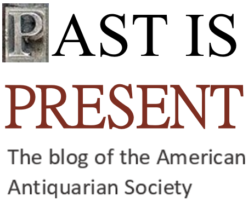
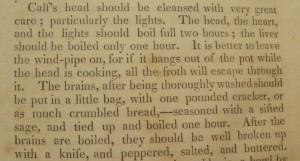
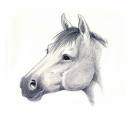 One of our great joys working on the far side of the reference desk is when a reader comes up to the desk with the words we all love to hear: “Look what I found!” We always know we are in for a surprise and now we can share these treats with you. (Be sure to read this one through to its hilarious conclusion …)
One of our great joys working on the far side of the reference desk is when a reader comes up to the desk with the words we all love to hear: “Look what I found!” We always know we are in for a surprise and now we can share these treats with you. (Be sure to read this one through to its hilarious conclusion …)